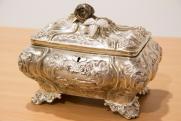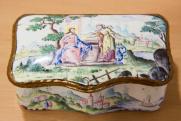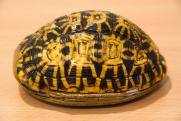2024. April 29. Monday
Tatabánya Museum - Tatabánya
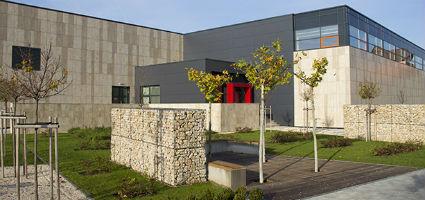 |
Address: 2800, Tatabánya Szent Borbála tér 1.
Phone number: (34) 688-192
E-mail: info@tbmuzeum.hu
Opening hours: Tue-Sat 10-18
|
The exhibition has closed for visitors.
2015.03.18. - 2015.06.07.
Museum tickets, service costs:
|
Ticket for adults
|
1200 HUF
|
|
|
Individual ticket for adults
|
950 HUF
|
|
|
Group ticket for adults
(up to 10 people)
|
800 HUF
|
/ group
|
|
Ticket for students
|
600 HUF
|
|
|
Group ticket for students
(up to 10 people)
|
500 HUF
|
/ group
|
|
Ticket for pensioners
|
600 HUF
|
|
|
Group ticket for pensioners
(up to 10 people)
|
500 HUF
|
/ group
|
|
Ticket for families
|
2500 HUF
|
|
|
Program ticket
|
1400 HUF
|
An exhibition of unparalleled value with masterpieces from the 16-19th century awaiting the visitors at the showing Spring Festival at the Tatabánya Museum. The Szomolányi Collection owned by the Déri Museum of Debrecen is of special interest in terms of history and art. The collection is on display in the museum hall from 20 March to 7 June.
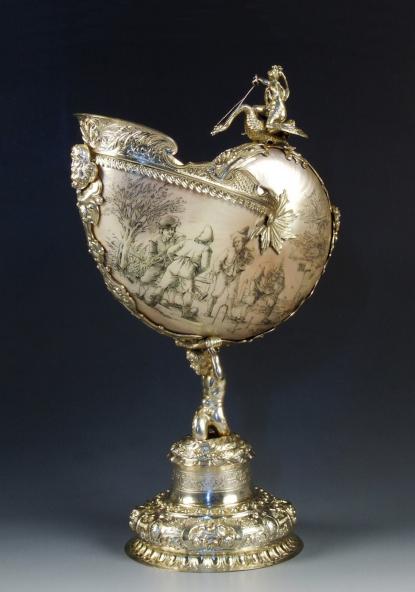
One of the most important collections of the Déri Museum is arriving at the Tatabánya museum this spring, which includes arts and crafts and also various art objects. The largest unit is made up of goldsmith items from the 16-19th century, which were made in European goldsmith workshops and art centres such as Augsburg, Nuremberg, Vienna, Transylvania or the Upper Hungary. In addition, a significant number of caskets, miniatures, portable clocks and Oriental rugs can be viewed at the exhibition.
The collector, Elemér Szomolányi (1909-1992) was enchanted by the beauty of industrial and artistic masterpieces. He began to consciously develop his collection after World War II. He carried out diligent research work, he did not only participate in Hungarian auctions, but also visited the most important foreign (eg Vienna) auctions. His activities made him an internationally recognized collector. Not withholding cash and taking painstaking journeys, he put together stunning richness of art collections which, according to his will, is now held by the Déri Museum.
The exhibition was organized by Mrs. Kis, Julianna Cseh (Tatabánya Museum) and József Dénes Kovács (Déri Museum). The ceremonial opening of the exhibition Magical Works of Art is to be held at 17.00, 20 March. The opening speech will be held by the Deputy Mayor of the Town Of Tatabánya Mrs. Turai, Katalin John , and the historian-ethnographer Emőke P. Szalay.
Nautilus Cup, Vienna, XVII.century.
The "Nautilus cups" probably used to be the most luxurious and extravagant baroque art masterpiece. Their central element was made up of Nautilus shells, which were contained in richly decorated gilded silver. The widespread use of these Cups was due to the East India Companies, as traders shipped to Europe large numbers of shells, which were later used by goldsmiths in their works. Because significant trade took part in the Dutch and German (Hanseatic) ports, it is not surprising that the Nautilus goblet primarily spread in German-speaking areas.

One of the most important collections of the Déri Museum is arriving at the Tatabánya museum this spring, which includes arts and crafts and also various art objects. The largest unit is made up of goldsmith items from the 16-19th century, which were made in European goldsmith workshops and art centres such as Augsburg, Nuremberg, Vienna, Transylvania or the Upper Hungary. In addition, a significant number of caskets, miniatures, portable clocks and Oriental rugs can be viewed at the exhibition.
The collector, Elemér Szomolányi (1909-1992) was enchanted by the beauty of industrial and artistic masterpieces. He began to consciously develop his collection after World War II. He carried out diligent research work, he did not only participate in Hungarian auctions, but also visited the most important foreign (eg Vienna) auctions. His activities made him an internationally recognized collector. Not withholding cash and taking painstaking journeys, he put together stunning richness of art collections which, according to his will, is now held by the Déri Museum.
The exhibition was organized by Mrs. Kis, Julianna Cseh (Tatabánya Museum) and József Dénes Kovács (Déri Museum). The ceremonial opening of the exhibition Magical Works of Art is to be held at 17.00, 20 March. The opening speech will be held by the Deputy Mayor of the Town Of Tatabánya Mrs. Turai, Katalin John , and the historian-ethnographer Emőke P. Szalay.
Nautilus Cup, Vienna, XVII.century.
The "Nautilus cups" probably used to be the most luxurious and extravagant baroque art masterpiece. Their central element was made up of Nautilus shells, which were contained in richly decorated gilded silver. The widespread use of these Cups was due to the East India Companies, as traders shipped to Europe large numbers of shells, which were later used by goldsmiths in their works. Because significant trade took part in the Dutch and German (Hanseatic) ports, it is not surprising that the Nautilus goblet primarily spread in German-speaking areas.

